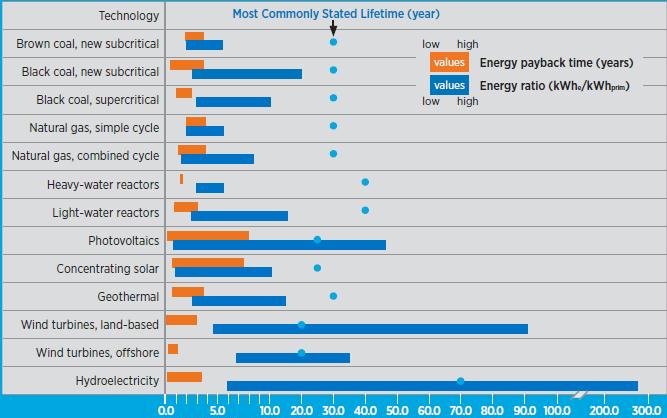Heating load is one of the requirements for a passive house. Although the passive house standard does not eliminate heating, it severely limits the total amount of heating needed over the year, or the maximum needed at the coldest time of year. The limit means it is possible to heat a passive house just by adding heat to the incoming air with no central heating or other equipment. We have underfloor heating, but the house still meets the standard, which is 15 kilowatt hours per square metre per year.
After over three years of living in the house, we should have some idea of whether the actual performance of the house is the same as the simulation. The total primary energy use is easy to work out, and it is in the same ball park: 106 kWh/m2a compared to 94 in the simulation. All our energy is from electricity, and it is metred, so we know exactly how much is being used. To find the primary energy, you need to multiply the electrical energy by 2.7 to account for inefficiencies in power stations and transmission.
The Passive House simulation, and my measured calculation is assuming that all our electricity comes over the grid, mostly from fossil-fuel power stations. Around 80% ours does. The other 20% is from our solar panels. Since they are only on the roof, the transmission losses are low, and they are not burning any fossil fuels, so their running primary-energy costs are zero. We do have to pay back the primary energy used in their manufacture.
It's difficult to find a definitive list of primary energy factors. Development of the Primary EnergyFactor of Electricity Generation in theEU-28 from 2010-2013 gives some answers, not strictly relevant to Japan. The figures it gives are more useful as averages for the EU as a whole. This Leonardo Energy confidential report from July 2011 shows a range from 2 to 3 around Europe, and gives a primary energy factor for photovoltaic power in Poland as 0.7.
The Centre for Alternative Technology has a few more ideas on this, suggesting a square metre of panel used 250 kWh of energy to make, in 2004-2006. They also note that production goes up, and efficiency increases year on year. We should probably double this figure to account for transport and installation, just to be pessimistic. In a 30 year lifetime, each square metre of my panels will produce something like 7000 kWh, around fifteen times the energy to manufacture. So the primary energy factor is about 0.07. The Energy Skeptic has more information on this.
 |
| Graph from IPCC, via Energy Skeptic |
We can place the primary energy factor at an arbitrary point between 2.7 and 0.07 and get the actual primary energy use to be the same as the simulated energy use.
It may be more sensible to accept that the simulation used the figure of 2.7 for all the electricity, so we should use it with the actual figures too. And we can easily explain the difference between the simulation and actual figures by the amount of hot water we use, which in bath-loving Japan is higher than the shower-based European figures.
Whichever way you look at it, this house uses less primary energy than the Passive House standard of 120 kWh/m2a.
Edenhofer, O.; et al., eds. 2011. IPCC Special Report on Renewable Energy Sources and Climate Change Mitigation. Cambridge, UK, and New York: Cambridge University Press. http://srren.ipcc-wg3.de/